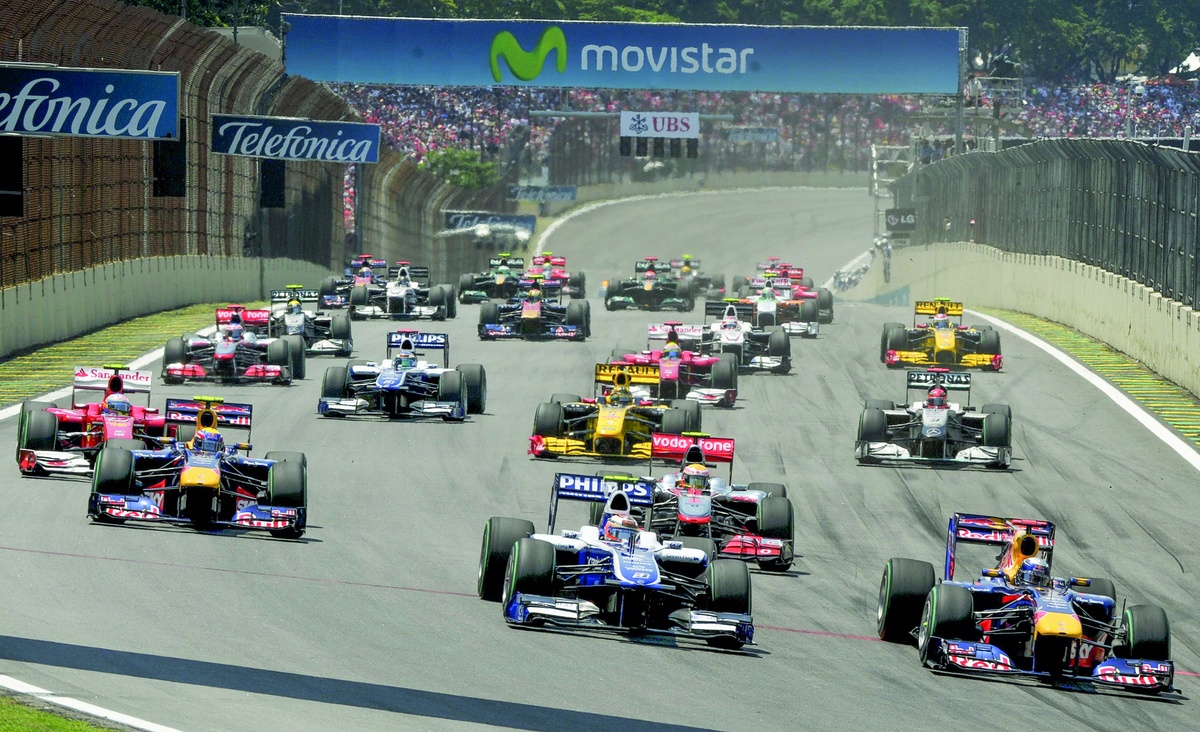
Formula 1's future is a hot topic, particularly with the sweeping regulation changes slated for the 2026 season. These changes encompass both chassis and power unit specifications, aiming for smaller cars, active aerodynamics, and a balanced 50/50 split between combustion and electrical power in the engines. The driving force behind these adjustments is the increasing size of F1 cars over the years, which has reportedly made overtaking more challenging and reduced the excitement of wheel-to-wheel racing.
Verstappen's Vision: A Return to Simpler Times
Max Verstappen, a four-time world champion, has voiced his opinion on the direction Formula 1 should take. He advocates for a return to the design philosophy of the late 2000s and early 2010s. During that era, cars were significantly lighter (approximately 180kg less) and powered by naturally aspirated V8 engines.
“What is most important is lighter cars, smaller cars,” Verstappen stated, emphasizing the need for a fundamental shift in car design. He believes that achieving this requires addressing the engine regulations. Modern F1 engines, while incredibly efficient, are also bulky. This increased size contributes to longer cars that demand more extensive cooling systems, ultimately resulting in larger overall dimensions.
Verstappen believes that emulating the cars of the 2010 era, or even earlier designs, would significantly enhance the racing spectacle. However, he acknowledges that the decision-making power rests with the sport's governing bodies.
Red Bull's Engine Challenge: An Uncertain Future
Adding another layer of complexity to the 2026 season is Red Bull's transition to manufacturing its own power unit. Since 2019, the team has relied on Honda for engine supply, and prior to that, they were supplied by Renault, Ferrari, and Cosworth. This new venture introduces uncertainty regarding Red Bull's competitiveness in 2026. Some speculate that the new regulations might favor Mercedes, which is rumored to have developed a particularly strong engine.
Despite the speculation, Verstappen refrains from making definitive predictions about Red Bull's performance. He acknowledges the inherent unknowns surrounding the competitive landscape for the upcoming season. "It's a big question mark, but honestly I think there are not many people that can say right now, ‘yes, we are going to be really, really good’," he commented. He emphasizes the lack of guarantees in such a transformative period.
Verstappen recognizes the magnitude of the challenge Red Bull faces in developing its own engine. However, he also views it as an exciting opportunity. He believes that having in-house engine development provides the team with the best chance to be competitive, rather than relying on an external manufacturer.
The Complexities of the New Regulations
The 2026 regulations are inherently complex, with the engine playing a critical role. However, Verstappen stresses that building a competitive car is equally important. Success will depend on a holistic approach, integrating the power unit and chassis seamlessly.
He anticipates a challenging start to the 2026 season as teams grapple with integrating all the new elements. "I think the first few races will be very challenging for everyone to integrate everything very well, from the power unit to the car and the behaviour in general, so hopefully it can give you some interesting races," Verstappen concluded.
Key Changes Coming in 2026:
- Smaller and Lighter Cars: A primary goal is to reduce the overall size and weight of the cars, improving agility and maneuverability.
- Active Aerodynamics: The introduction of active aerodynamic elements aims to optimize downforce and drag, potentially leading to more dynamic racing.
- 50/50 Power Unit Split: The engines will feature a balanced distribution of power between combustion and electrical sources, promoting efficiency and sustainability.
- New Power Unit Manufacturers: Red Bull's entry into engine manufacturing adds a new dimension to the competition, challenging established power unit suppliers.
The Formula 1 world is bracing for a period of significant change. While uncertainty remains, the anticipation surrounding the 2026 season is palpable. The success of the new regulations will depend on how effectively teams can adapt and innovate, and how well the changes translate into a more exciting and competitive racing spectacle for fans.

No comments:
Post a Comment